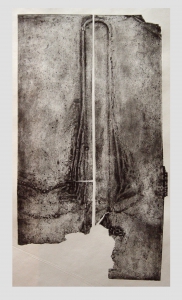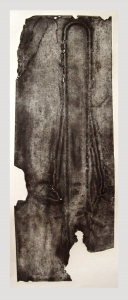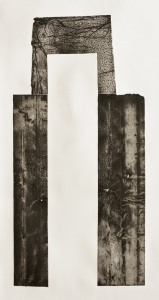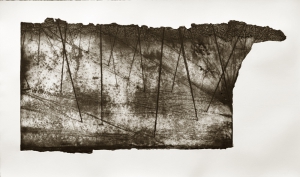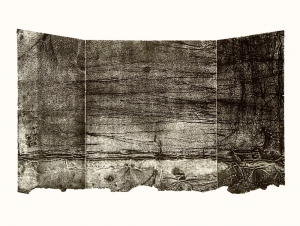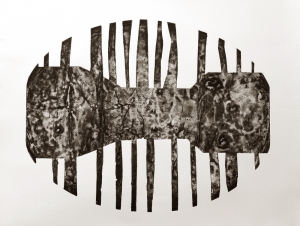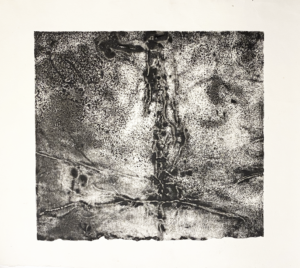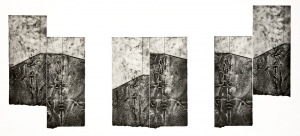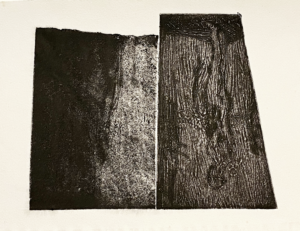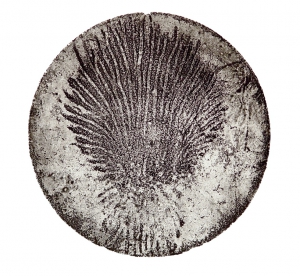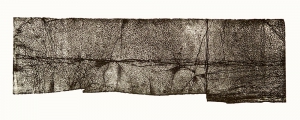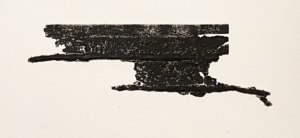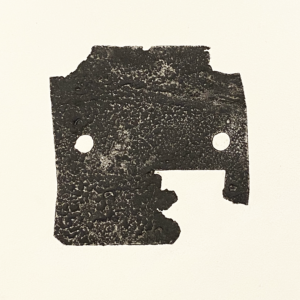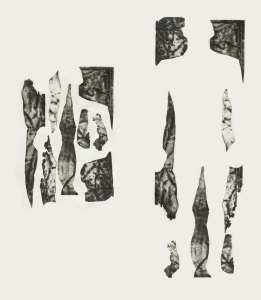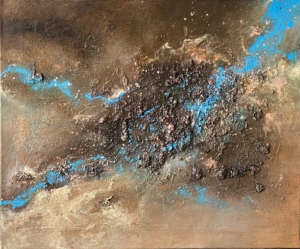Intaglio
Traces and Transformations
2001-2015
Beginning of intaglio series was developed as part of my art diploma. It investigates the dialogue between natural processes and artistic intervention. The starting point was not a blank plate, but rusted metal sheets found in the landscape — objects already marked by time, weather, and decay. These surfaces carry their own textures and histories: corrosion, scratches, and accidental patterns formed without human intention.
Instead of erasing these marks, i choose to work with and against them. Through etching, cutting, bending and other intaglio techniques, i manipulated the found plates, designing shapes and reading from what already was there. Then added layering gestures onto the existing traces. The result is a series of prints where natural and artistic forces coexist — neither dominating the other, but merging into complex, evocative surfaces.
Each print captures a kind of temporal sediment: traces of rust and time combined with artistic decision. The impressions are rich in texture and atmosphere, oscillating between landscape-like structures, abstract topographies, architectural shapes. The process transforms the plates from discarded remnants into sites of reflection — material witnesses that speak of transformation, impermanence, and the human impulse to find meaning within natural change.
